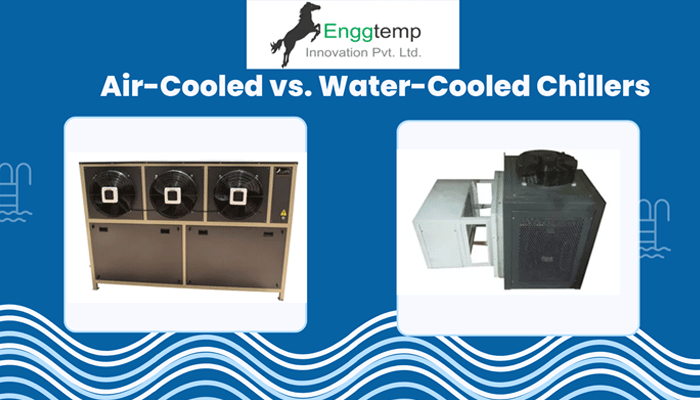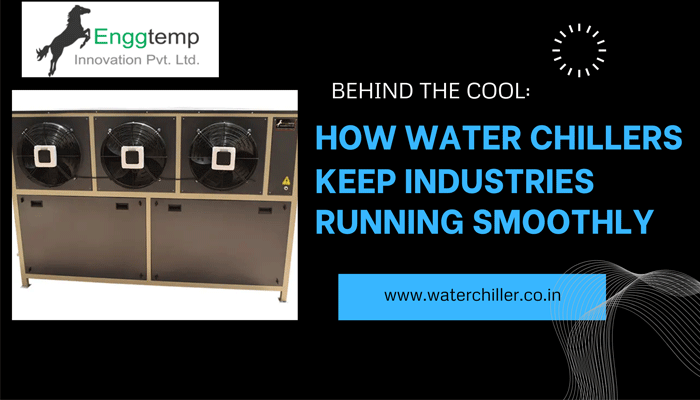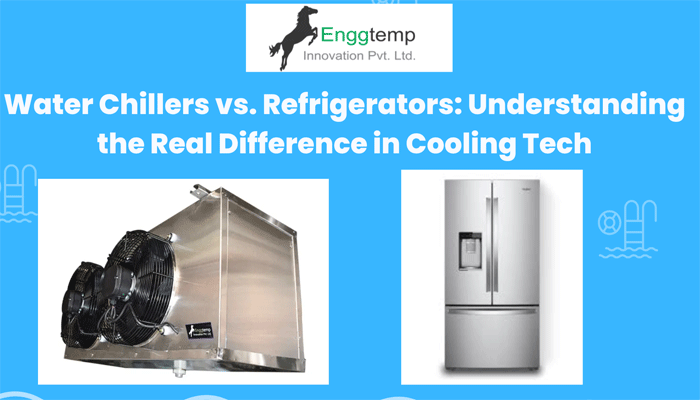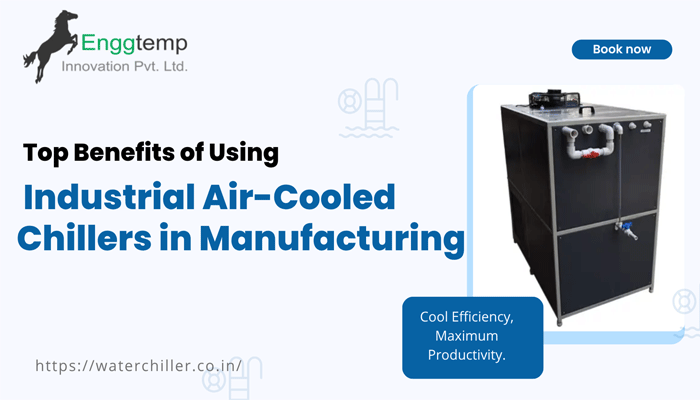

Behind the Cool: How Water Chillers Keep Industries Running Smoothly
By Admin 29 Aug 2025

Water Chillers vs. Refrigerators: Understanding the Real Difference in Cooling Tech

Top Benefits of Using Industrial Air-Cooled Chillers in Manufacturing

How to Reduce Energy Bills Using High-Efficiency Water Chillers

Installing a Water Chiller? 7 Costly Mistakes to Avoid

By admin / 29 Aug 2025
Water chillers are essential to modern industry, providing efficient, dependable cooling that keeps critical processes running smoothly and product quality consistently high. These engineered systems quietly work behind the scenes, removing excess heat from machinery, sensitive equipment, and manufacturing processes, enabling industry to operate at optimal speed, reliability, and energy efficiency.
A water chiller is an industrial refrigeration system designed to remove unwanted heat from processes, machines, or products by circulating a cooling fluid—typically water or a water-glycol mix—through a closed loop. This cooled fluid absorbs process heat and carries it away, enabling temperature control and heat dissipation essential for most industrial production lines.
Water chillers come in two main types: vapor compression and absorption. Both rely on circulating refrigerants through components that manage phase changes to extract heat efficiently, returning cooled water to the process in a continuous cycle.
The typical industrial water chiller operates on the principle of the refrigeration cycle—a closed-loop system involving four primary components: the evaporator, compressor, condenser, and expansion valve.
Evaporator: Warm process water enters the evaporator and transfers its heat to the refrigerant. The refrigerant changes from a low-pressure liquid to vapor, cooling the water that is re-circulated for use.
Compressor: The vaporized refrigerant travels to the compressor, which increases its pressure and temperature, preparing it to release absorbed heat in the condenser.
Condenser: The hot, pressurized refrigerant vapor enters the condenser, where it releases its heat—often to cooling tower water or ambient air—and returns to liquid form.
Expansion Valve: The high-pressure liquid refrigerant passes through an expansion valve, dropping in pressure and temperature, and returns to the evaporator to repeat the cycle.
Water chillers play a diverse and indispensable role in many industries by keeping temperatures stable and preventing overheating of components, systems, and products. Key sectors and uses include:
The widespread use of industrial water chillers is driven by their numerous advantages:
Stable, Precise Temperature Control
Water chillers maintain strict control over process temperatures, eliminating harmful fluctuations that could disrupt production or harm machinery. This ensures consistently high product quality and stable plant operations.
Reliable, Uninterrupted Production
By removing heat effectively, chillers help prevent unplanned downtime, equipment overheating, and system failures—a critical factor in industries requiring continuous high-volume output.
Energy Efficiency and Cost Savings
Modern water chillers are designed for maximum efficiency, reducing energy consumption—even under heavy use—when compared to air-based cooling systems. Recirculating water systems further lower operational costs by minimizing water usage.
Enhanced Equipment Lifespan
Proper cooling helps prevent thermal stress and premature wear of expensive machinery, reducing maintenance needs and extending asset lifespans.
Quiet Operation and Compliance
Water chillers typically operate quietly, with few moving parts exposed to the environment, making them suitable for sensitive or regulated environments.
Flexibility Across Applications
Chiller systems can be customized for different capacities and process needs, from centralized plant-wide cooling to dedicated machine or product-specific systems.
Behind the cool, water chillers are silent enablers of industry, underpinning progress by allowing for faster throughput, improved quality, and safer work environments. Whether in plastics, food processing, electronics, pharmaceuticals, or large commercial buildings, these systems offer a high return on investment by optimizing process efficiency and protecting valuable equipment.
Selecting the right water chiller, tuning it for the correct load and process conditions, and maintaining it are all key to maximizing industrial productivity. In this way, water chillers are not just “cooling machines,” but strategic assets driving forward the modern industrial world.
Owned & Powered by : #1 Vinayak InfoSoft - SEO Company Ahmedabad ||Industrial Water Cooled Chiller || Cold Room PUF Panels